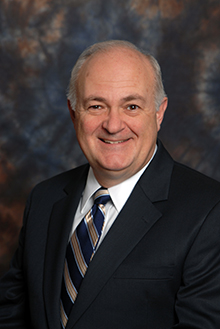President Steven Knapp visited the National Institute of Standards and Technology – the nation’s first federal physical science research laboratory – last week to learn how the George Washington University can foster partnerships and collaborations with the agency.
NIST, an agency of the U.S. Department of Commerce, has made significant advancements in image processing, smoke detectors, X-ray standards for mammography and pollution-control technology.
Steve Lerman, provost and executive vice president; Leo Chalupa, vice president for research; and David Dolling, dean of the School of Engineering and Applied Science, all traveled with President Knapp to NIST, where they toured a nanotechnology lab, observed a neutron reactor and heard from a leading forensic scientist.
President Knapp discussed his trip with GW Today.
What was the purpose of your visit?
I went to NIST with our new provost to acquire a first-hand understanding of the richness of NIST's programs and the possible ways in which they might benefit our students and faculty.
What was the most interesting thing you saw at NIST?
We visited two of NIST's extremely impressive facilities - one devoted to nanotechnology, which studies materials and builds devices at the scale of billionths of a meter, and the other devoted to the use of neutrons to "see" things that light can't penetrate. What was fascinating was the range of scientific and practical uses to which NIST's discoveries in these areas can be put.
What could a relationship with NIST mean for GW?
One of the great advantages of GW is our proximity to the unparalleled resources of federal agencies like NIST. During our visit, we discussed multiple opportunities for our faculty and students to use NIST's state-of-the-art scientific instruments, for students to serve as NIST interns and for research and teaching collaboration in areas where both institutions are especially strong, such as forensic science.
Did you get any ideas during your visit on how to further expand research initiatives at GW? Anything in particular for GW’s proposed science and engineering complex?
One of my main take-aways was the paramount importance of collaboration. We have reached the point in the evolution of human science and technology where future progress simply cannot be made without collaboration that crosses the traditional boundaries of academic disciplines and departments.
What was it like to wear a cleanroom suit (also known as a bunny suit) when you visited the nanotechnology lab? Who wore it best: you, Provost Lerman, Dean Dolling or Dr. Chalupa?
Well, it was just a tad claustrophobic. In answer to your second question: once we had it on, I could no longer tell who was who!


